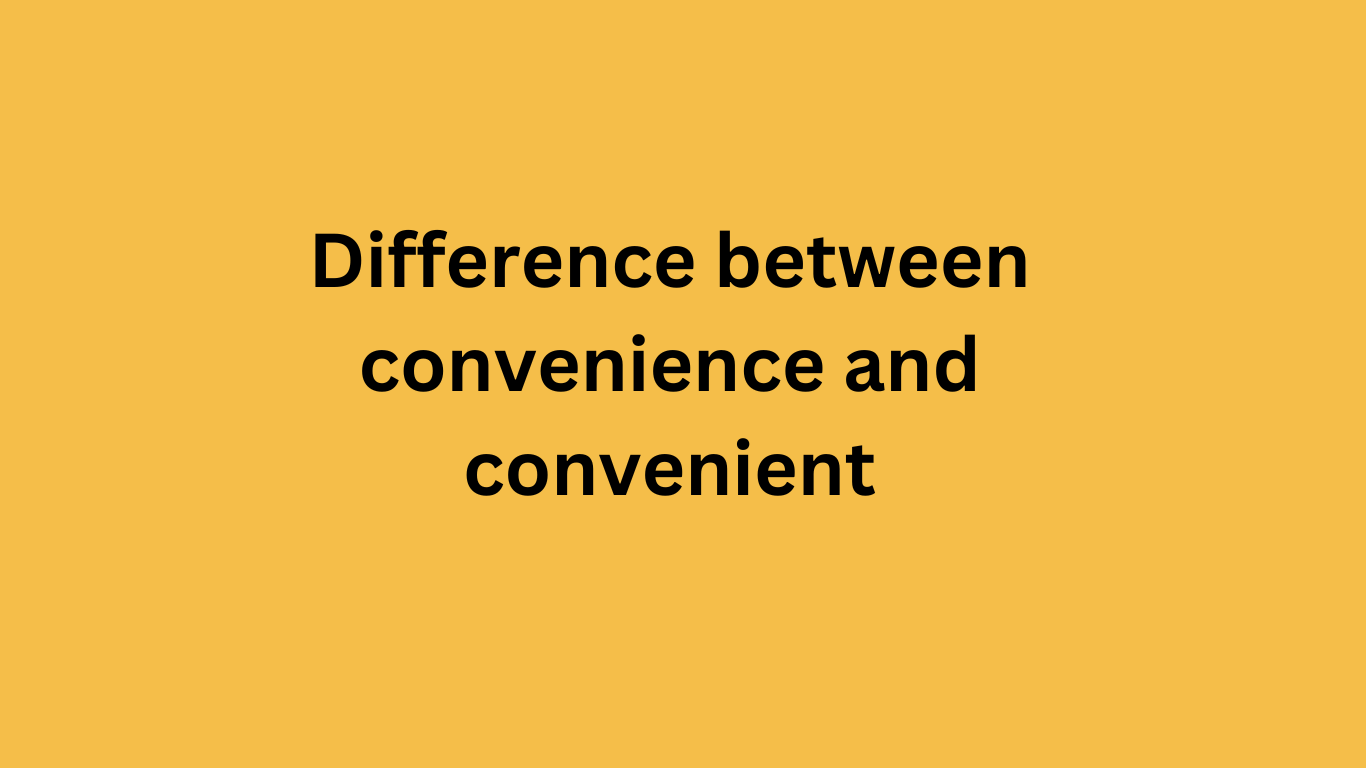The English language is filled with words that are closely related yet distinct in meaning, function, and usage.
Two such terms are “convenience” and “convenient.”
While they stem from the same root word and convey similar ideas, their usage differs based on their grammatical roles and contexts.
This difference between article explores the differences between the two!
Let’s start!
What is Convenience?
Convenience is a noun that refers to the state or quality of being easy, accessible, or suitable. It represents an abstract concept or a tangible factor that makes a task or situation less difficult.
Key Features of Convenience
- Part of Speech: Noun.
- Definition: Refers to the benefit, comfort, or ease provided by something.
- Contextual Use: Typically used when emphasizing the idea or concept of ease.
- Common Collocations:
- “At your convenience”
- “For the sake of convenience”
- “Added convenience”
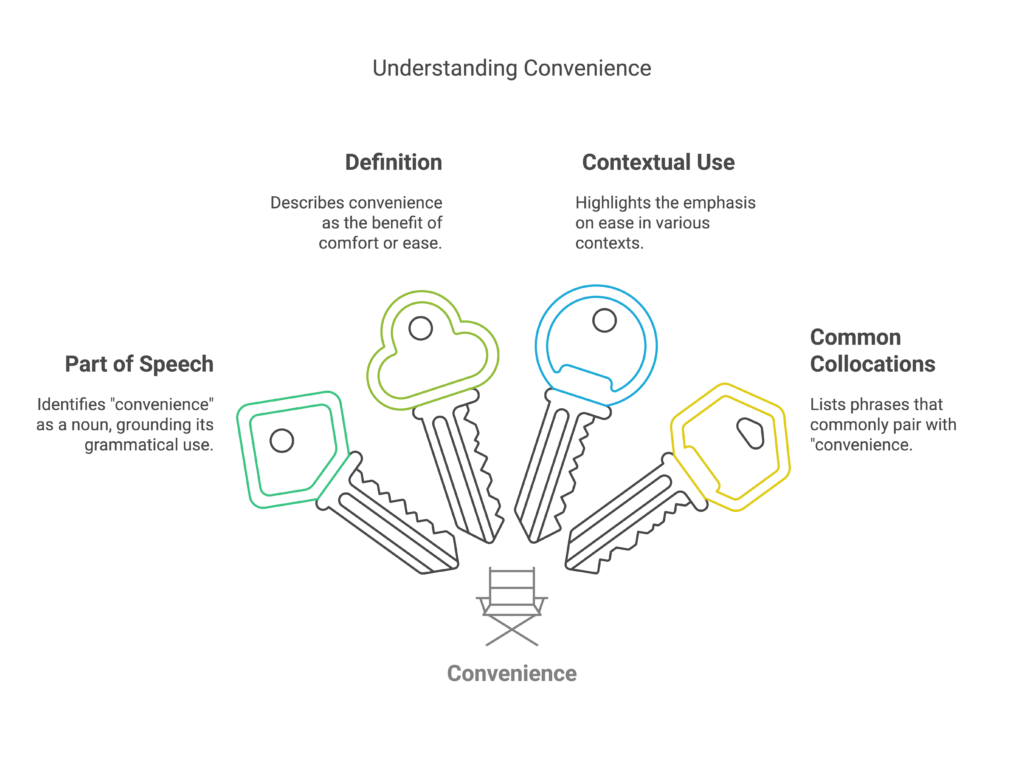
Examples of Convenience in Sentences
- Online banking is a modern convenience that saves time.
- The store was designed for customer convenience.
- For your convenience, we offer free home delivery services.
What is Convenient?
Convenient is an adjective that describes something as being easy to use, accessible, or suitable for a particular need or purpose. It qualifies or modifies nouns.
Key Features of Convenient
- Part of Speech: Adjective.
- Definition: Indicates that something is favorable or well-suited to a situation.
- Contextual Use: Used when describing objects, actions, or situations that provide ease or suitability.
- Common Collocations:
- “Convenient location”
- “Convenient time”
- “More convenient”
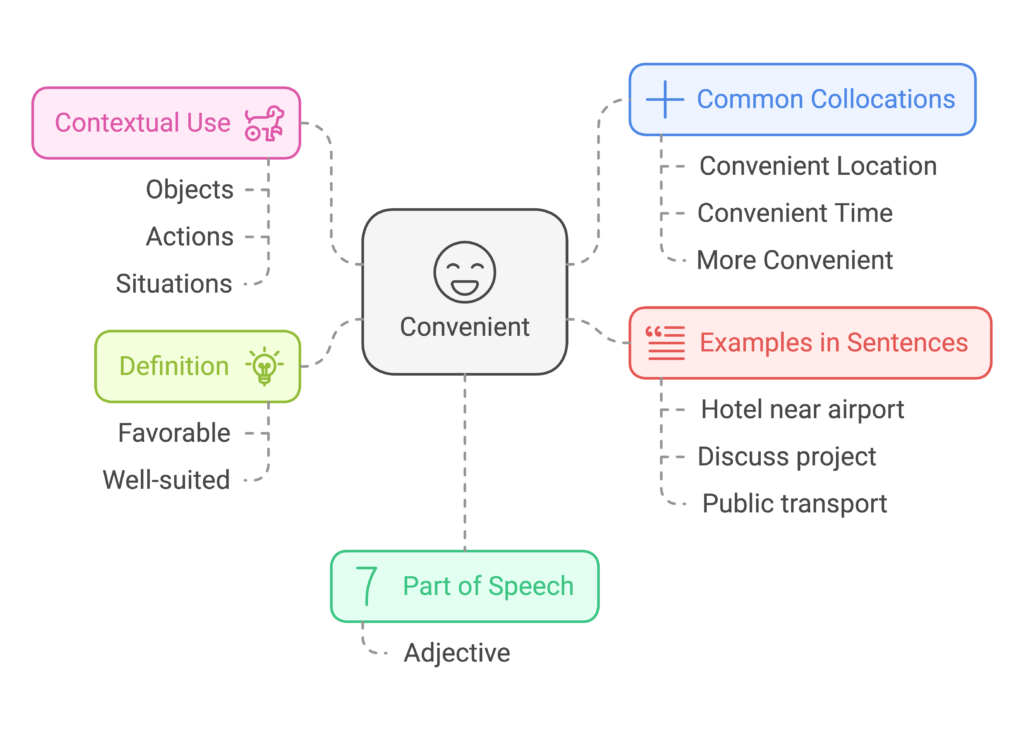
Examples of Convenient in Sentences
- The hotel is conveniently located near the airport.
- Is this a convenient time to discuss the project?
- Public transport is often more convenient than driving in a crowded city.
| Aspect | Convenience | Convenient |
|---|---|---|
| Part of Speech | Noun | Adjective |
| Meaning | Refers to the idea, state, or benefit of ease or comfort. | Describes something that is easy, suitable, or favorable. |
| Usage | Used to talk about the abstract quality or the general idea of ease. | Used to qualify or describe a specific object, action, or situation. |
| Examples | “This app is a great convenience for busy parents.” | “The app is convenient for scheduling appointments.” |
| Grammatical Role | Acts as the subject or object in a sentence. | Modifies nouns to explain their suitability or ease of use. |
| Focus | Emphasizes the benefit or idea of something being easy. | Focuses on describing a noun as easy or suitable. |
Quick tip to Remember
- If you’re talking about the idea or benefit of something being easy, use convenience (noun).
- Example: The convenience of having 24/7 customer service is unmatched.
- If you’re describing a specific thing or situation as easy or suitable, use convenient (adjective).
- Example: The customer service hours are very convenient for international clients.
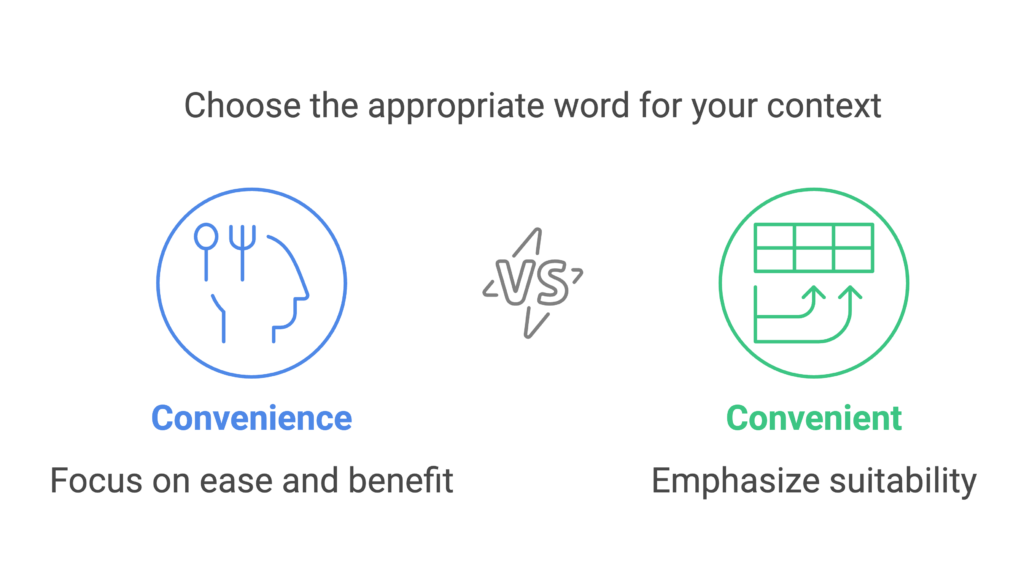
Examples of Both Words in the Same Context
- Convenience: The convenience of ordering food online saves time and effort.
- Convenient: Ordering food online is convenient for people with busy schedules.
By comparing these examples, you can see how convenience focuses on the idea, while convenient describes something specific.
Got it?
Common Mistakes to Avoid
- Using “convenience” as an adjective:
❌ That is a convenience way to solve the problem.
✅ That is a convenient way to solve the problem. - Using “convenient” as a noun:
❌ For your convenient, the form has been pre-filled.
✅ For your convenience, the form has been pre-filled.
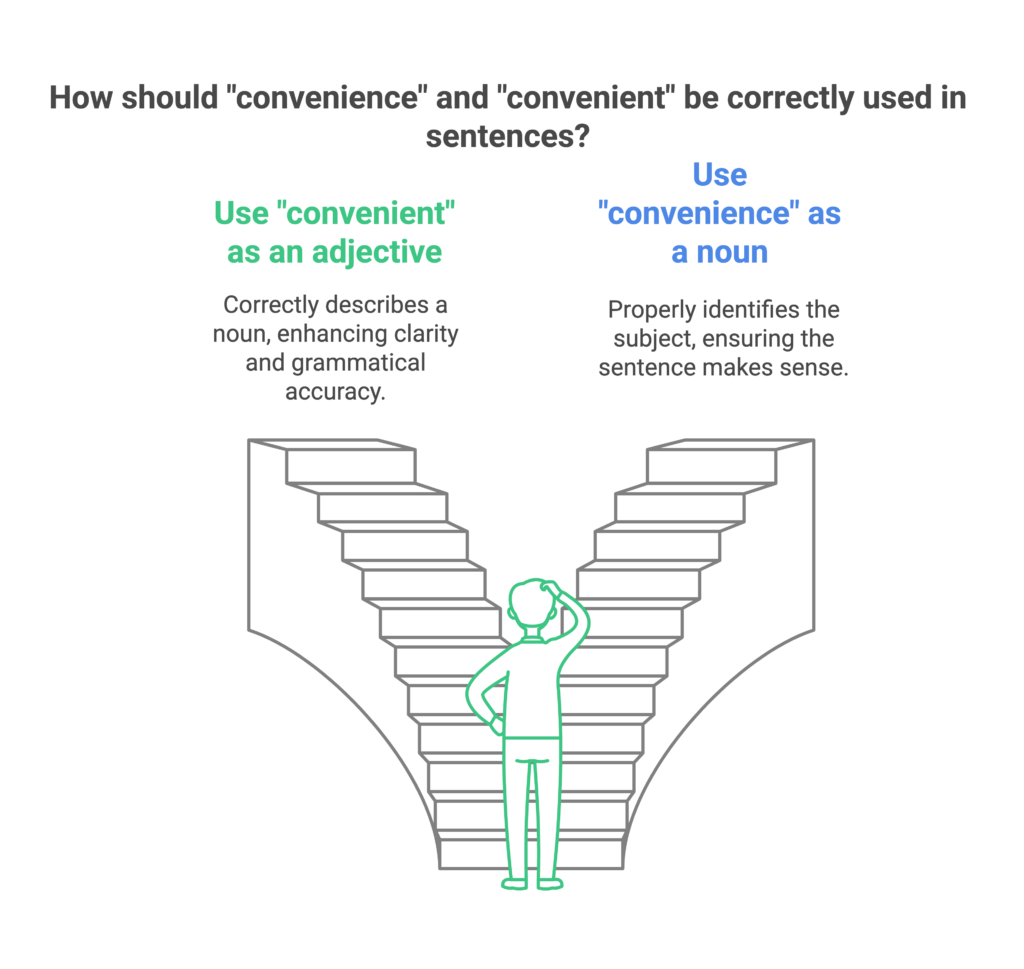
To conclude:
While convenience captures the idea or benefit of ease, convenient describes the suitability of something in a specific context. We hope the above information has given you the needed clarity you wanted to gather before using the two terms legibly.
Now that you know the difference, try creating your own examples and confidently use them whenever and wherever needed.
